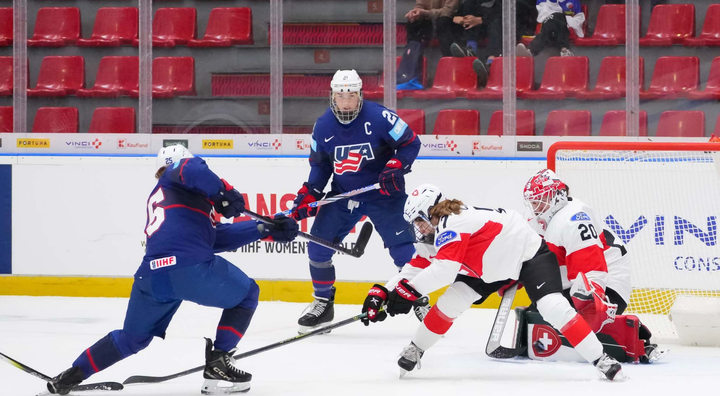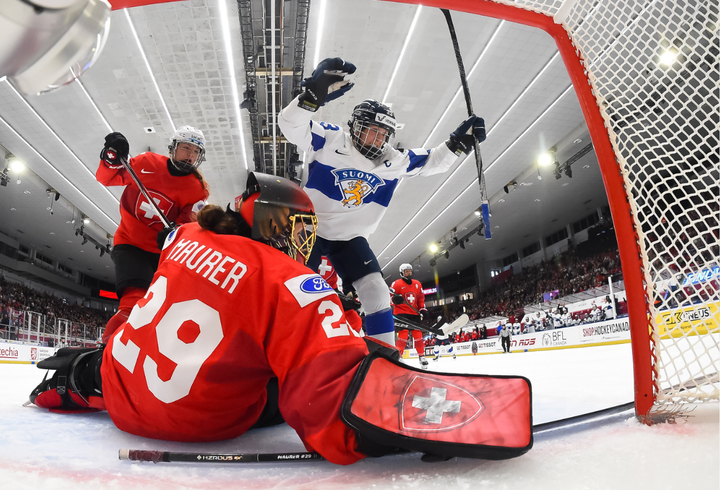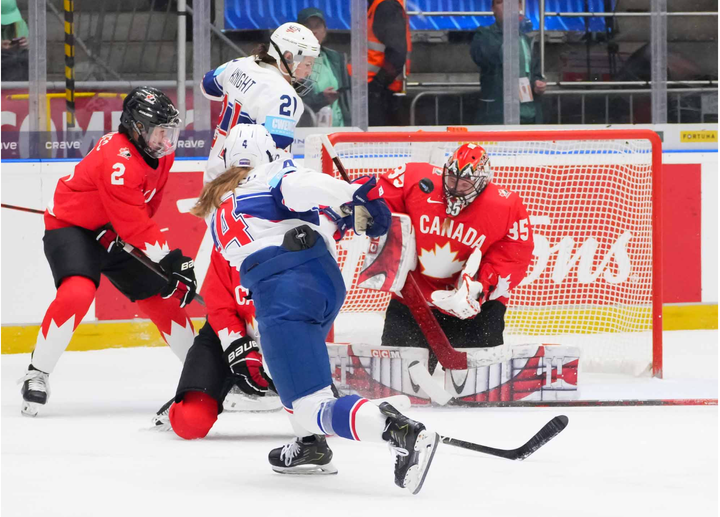The curious case of Leif Boork
Team Sweden’s head coach has alienated players and led the team to their worst season since 2002. Is the failure just with him, or does it go deeper into the organization?
Readers, let’s get hypothetical for a moment.
Imagine that Erik Karlsson was kicked off the Swedish national team by his coach the summer after leading the Senators to a Stanley Cup. Imagine Nicklas Bäckström, Henrik Lundqvist, and Gabriel Landeskog formally petitioning the Swedish Ice Hockey Association (SIHA) and telling them they’d lost faith in their coach, that the prescribed systems brought no progress, the team environment brought no confidence, and that the coach’s leadership brought no results.
Imagine numerous players anonymously coming forward to the media with revelations of a team environment fraught with silence and fear, where any dissent is met with swift and harsh retribution. Imagine Niklas Kronwall resigning from the captaincy and leaving the national team due to conflicts with that same coach.
Would that coach still have the “full confidence” of the SIHA?
Carry this hypothetical forward a year. Imagine the Tre Kronor are coming off of their worst season in 14 years, winning only four international games before the World Championships, where they finished a dismal sixth place after sputtering out in the quarterfinal. The season ends. The results are bleak. Does that coach retain his employment?
The good money is on no. The smart money is on hell no.
This is the current position of the Swedish women’s national hockey team. The only thing hypothetical about the scenarios above are them happening to the men’s team instead. All of these things have taken place in just under a year, and yet Leif Boork is, at the time of this writing, still employed and considered to be Team Sweden’s head coach for the PyeongChang Olympics.
Why?
That’s an excellent question.
That same question was asked by many after star defender Emma Eliasson was kicked off the national team just after leading her SDHL club team Luleå HF to their first championship title. It was asked again when captain Jenni Asserholt retired from the national team. And a third time when news of some players petitioning the SIHA for Boork’s removal last summer became public. Estimates of how many players were involved vary in the media and those who know for sure aren’t telling, but the controversies paint a vivid picture of the players’ missing trust, confidence, and belief in their coach.
SIHA President Anders Larsson immediately went on the defensive; he considered the situation "handled" in a 2016 interview with Aftonbladet and reiterated SIHA’s confidence in moving forward with Boork at the team's helm.
Less than a year later, after the team’s worst season since 2002-2003, the SIHA has told The Ice Garden that it’s standing pat:
"The Swedish Ice Hockey Association have no intention to replace Leif Boork prior to the 2018 Olympics, we have full confidence in Boork and he will lead Damkronorna over the 2018 Olympics."
Out of Touch, Out of Time
Boork started as a men’s hockey coach in the early 1970s. He eventually made his way to the SHL, the highest tier of Swedish men’s hockey, where he won one championship in 1983. Boork also earned an SHL silver in 1984 and a Canada Cup silver medal the same year. In other words, the last time a Leif Boork-led team earned a major medal, Ronald Reagan was President of the United States, the Soviet Union was years away from falling, and “When Doves Cry” was the number one song of the year.
The world was a different place and hockey was a different game. While Leif Boork's domineering "my way or the highway" coaching style may have brought him some success over 30 years ago, both the times and the game have changed. He has not. Furthermore, Boork is adamant that he will not, and blames the recent failures of Swedish women's hockey not on himself, but on compromise:
Players certainly don't need to like their coach in order for a team to win, but there has to be a level of mutual respect. Does Leif Boork respect his players, or does he view them as simply that - his players. Players who are there to take orders with no discussion or, heaven forbid, dissent?
That is not the message of a leader, that's the message of a petulant individual who's allergic to self-reflection. Coaches are, by nature of their position, authority figures. But they're not dictators and they're certainly not infallible. Leaders understand compromise and discussion are healthy and productive activities crucial to running any organization. Old men who yell at at clouds see any mention of compromise as a direct threat to their authority.
Did Leif Boork feel Emma Eliasson threatened his authority? Is that the origin of the conflict that led to him kicking arguably the best defender in Damkronorna history off of the team? What about former team captain Jenni Asserholt, who resigned from the national squad after a feud with Boork? He certainly feels threatened by former national team superstar forward and current SVT analyst Maria Rooth, who has been critical of him on numerous occasions. Despite declaring himself “a bit like the women’s hockey knight” of the Twitterverse, his feed is full of grievances against his detractors, including Rooth:
Part of Boork's conflict with Asserholt stemmed from her declining to participate in two out of three summer training camps last year, in order to earn money running a hockey school with two business partners in the United States. His conflict with Eliasson is rumored to have roots in a similar issue. Considering the vast income disparity between male and female hockey players and how many of the Damkronorna work or study full-time in addition to playing hockey, one would expect some compromise in regards to the players' time.
Except, as evidenced by his own words, Leif Boork does not believe in compromising with star players.
If female hockey players were paid a full living wage year-round by the SIHA, their coach would be well within his rights to expect their attendance at all camps, practices and training sessions. However, as Damkronorna team manager Olof Östblom told NSD Sport back in March, the players receive no money from the SIHA, rather some of them receive stipends from the Swedish Olympic Committee. This statement echoes the arguments made by USA Hockey President Jim Smith during the USWNT’s strike, that the players were not employees of USA Hockey, and that they received payments from the US Olympic Committee instead.
NSD Sport pointed out to Östblom that while the Tre Kronor will earn healthy financial bonuses if they medal at the World Championships in Paris and Cologne, the Damkronora, had they medaled in Plymouth, would have earned nothing.
“I'm not sure that championship bonuses are a very important issue for developing women’s hockey,” said Östblom. He also pointed out that the men’s bonus comes from the IIHF prize money and was negotiated with the Tre Knonor players’ union Sico. The Damkronorna have no equivalent, and therefore, according to Östblom, negotiations about splitting the IIHF’s prize money is impossible.
Forget about development for a second. What about sustaining the current players and lessening the financial burden they take on in order to play? As Östblom says, they’re not compensated for the money they lose by missing work to attend camp. Missing work means they don’t get paid, while missing camp in order to work is not considered a valid excuse, as we know from Boork’s treatment of Jenni Asserholt.
Boork's refusal to seek a middle ground in regards to sporting achievement and the players' need to make a living is bad enough. Its tacit endorsement by the federation’s officials is worse. Both are symptoms of a much larger disease that infects the Swedish Ice Hockey Association’s attitude about the Damkronorna: apathy.
Communication Breakdown
Take Lina Bäcklin, for example. A member of the 2014 Olympic team, she was invited to play at the 2016 World Championships but had to turn it down due to off-ice complications she called "more important than hockey." It's not unreasonable to assume that if an issue is serious enough that a player declines an opportunity to represent her country on the world's highest stage, then it probably merits some understanding and compassion. Instead, she was removed from the team with no explanation from Boork and has not received any communication from him since.
Although Bäcklin is still hopeful she'll make the 2018 Olympics, Emma Eliasson cited the lack of an Olympic opportunity as one of her reasons for retiring from hockey. She also mentioned the strain of both full-time work and full-time dedication to hockey, pointing to Sundsvall captain Beatrice Johansson’s burnout last fall as evidence that things need to change. In addition, the SDHL has grown and expanded during its eight-year existence, meaning longer seasons and more work from the club side. According to Eliasson, the demands of the national team have not changed to accommodate this.
“They’re so damn tired at the end of the season,” she told Kuriren, speaking about her former Damkronorna teammates. “At that time we only played 14 games... now we play 36. I wonder if [the Swedish Ice Hockey Federation] ever thinks of this.”
But that, of course, would require compromise.
While Leif Boork doesn’t have the odious track record of coaches like Indiana University’s Bobby Knight or former Quinnapiac women’s hockey coach Rick Seeley, he also doesn't have accolades to fall back on or a winning record to point to. He certainly hasn't led the Damkronorna to medals or better results. Instead, he's ground the team's growth to a halt, alienated star players, driven the best of the best out of the national team and, in Emma Eliasson's case, out of the sport altogether. Boork has done this while sticking his head in the sand with all the finesse and accountability of an irate geriatric ostrich as the SIHA has stood idly by.
It is worth noting that Radio Sweden recently conducted an anonymous survey of the Damkronorna. Nineteen out of the 23 players opted to answer, and their results are interesting. According to their results, the “vast majority” of players want Boork to stay. Others cited the remaining 10 months until the next Olympics, with one saying “We cannot make a radical change now.” Those in favor of a change in leadership shared similar criticisms of the coach: “He has not reached any results,” said one. “He’s taking us nowhere. [The team] needs a more modern leadership,” said another.
Just how honest was this “vast majority?”
How would players, many of whom were present in the summer of 2016 and watched teammates be kicked off of the squad for disagreeing with their coach, feel about publicly voicing their real feelings in lieu of that kind of consequence? Maria Rooth’s SVT colleague Mikael Renberg asked that same question, positing that “There are no good studies to call the players and ask. There are players who are active that Leif has removed from the national team. It’s difficult for players to criticize their own coach.”
Boork's continued employment is a slight not only to the the players but to Swedish women’s hockey itself, and it comes right from the people who are supposed to grow and nurture the game. The Damkronorna should feel insulted that all of the time and effort they put into staying at the top of the game while simultaneously working to earn a living is disregarded.
Related
Luleå HF’s Emma Eliasson announces retirement from hockey
Keeping Boork on for PyeongChang represents further waste of prime talent like Fanny Rask, Pernilla Winberg and Sara Grahn, who will likely have to wait until 2022 to have a chance at getting Sweden back on the Olympic podium. Furthermore, what kind of development can up-and-coming defender Maja Nyhlén-Persson expect to see under his systems and leadership style? What kind of mental toll will it take on a 16-year-old, who is still a child under Swedish law, to be subjected to such a repressive and downtrodden environment? What sacrifices will she, as a female hockey player, have to make that her male counterparts will not?
While the failure starts with Leif Boork, responsibility ultimately lands with the Swedish Ice Hockey Association.
It’s up to them to mediate conflicts between players and coaches, and to intervene long before any situation degenerates to such an unconscionable extent. What kind of support did Emma Eliasson and Jenni Asserholt get, and how much more would they have gotten if they were men? Would a third-party mediator have been appointed, or perhaps a counselor? Would the SIHA have cared more?
The answer is hypothetical, predictable, and, as Maria Rooth said, “incredibly sad.”
The answer, of course, is yes.





Comments ()